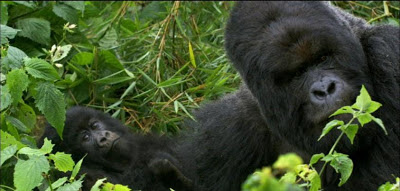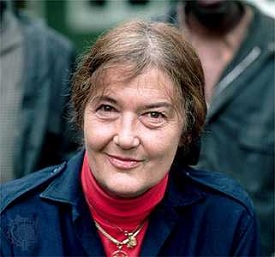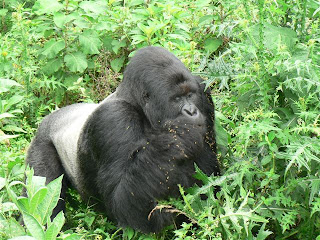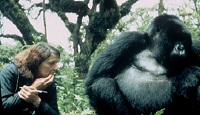After covering man’s
efforts to study the world around him, David takes a look at the consequences
of human activities on not only the living beings that cohabit our planet but
the planet itself.
The World Wildlife Fund
(WWF) was formed in 1961 and one of their earliest conservation efforts was
focused on the endangered animals in the Galapagos Islands.
The Galapagos tortoise
weigh upto 250 kgs and live upto 150 years, making them the longest living
animals on earth.
Click on the link below to buy your copy:
We then meet the late Lonesome George, who was the last member of his species, the Pinta tortoise.
We then meet the late Lonesome George, who was the last member of his species, the Pinta tortoise.
Then the focus shifts to
the Virunga Mountains, one of the last remaining strongholds of the critically
endangered MountainGorillas.
 |
| Mountain Gorillas |
David’s visit was shortly
preceded by the brutal killing of Digit, Dian’s favorite gorilla. He witnessed
first-hand Dian’s grieving for her loss. After returning to England, he took up
the cause himself. Readers interested to know more about Mountain Gorillas are
encouraged to read the book: Gorillas inthe Mist by Dian Fossey.
Mountain Gorillas are not the only great apes covered in this episode. David also worked with Orangutans
back in the 1950s. He brought back one of the Orangutans to the London Zoo and
named him “Charlie”.
We then move on to the
giants of the oceans, the Blue Whales. David encountered them for the first
time at the age of 76. The whaling industry has taken a heavy toll on the
worldwide population of whales.
In addition to these
magnificent beings, the planet is also at the receiving end of man’s
activities. Earth’s climate has been undergoing some drastic changes and this
affects every living being in the world.
It is high time, we human beings take active steps
to ensure the survival and flourishing of our fellow beings who share our
wonderful planet with us. As David states, we need concerted efforts on an
international level.
David’s observations about Mountain Gorillas
perhaps sums it the best:
“There is more meaning and mutual understanding in
exchanging a glance with a gorilla than any other animal I know.”
Image Source: PBS Nature





















